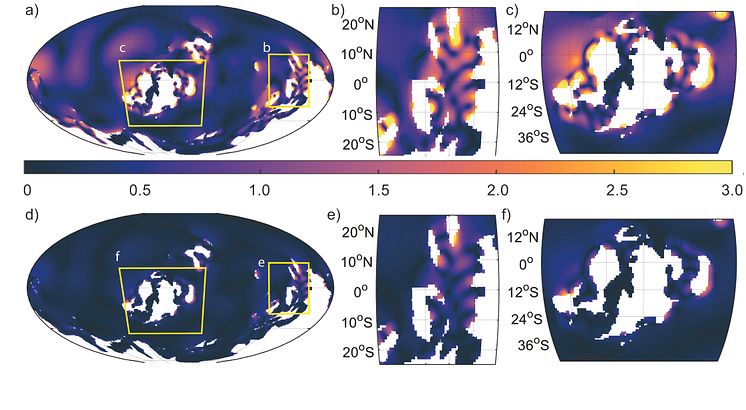
Image -
Silurian tides
A tidal simulation for the Late Silurian, with the colors depicting varying tidal ranges in meters for two tidal constituents. The first being the semi-diurnal (twice a day) lunar constituent (A-C), and the semi-diurnal (twice a day) solar constituent (D-F). Enlarged areas of evolutionary interest are shown in (B) and (E) for the South China region and (C) and (F) for Laurussia. Note the large tidal ranges seen around the South China region, the area where the first bony fish appeared.
Mattias Green/Bangor University
- License:
- Media Use
The content may be downloaded by journalists, bloggers, columnists, creators of public opinion, etc. It can be used and shared in different media channels to convey, narrate, and comment on your press releases, posts, or information, provided that the content is unmodified. The author or creator shall be attributed to the extent and in the manner required by good practice (this means, for example, that photographers should be attributed).
- By:
- Mattias Green/Bangor University
- File format:
- .jpg
- Size:
- 2242 x 1233, 1.24 MB